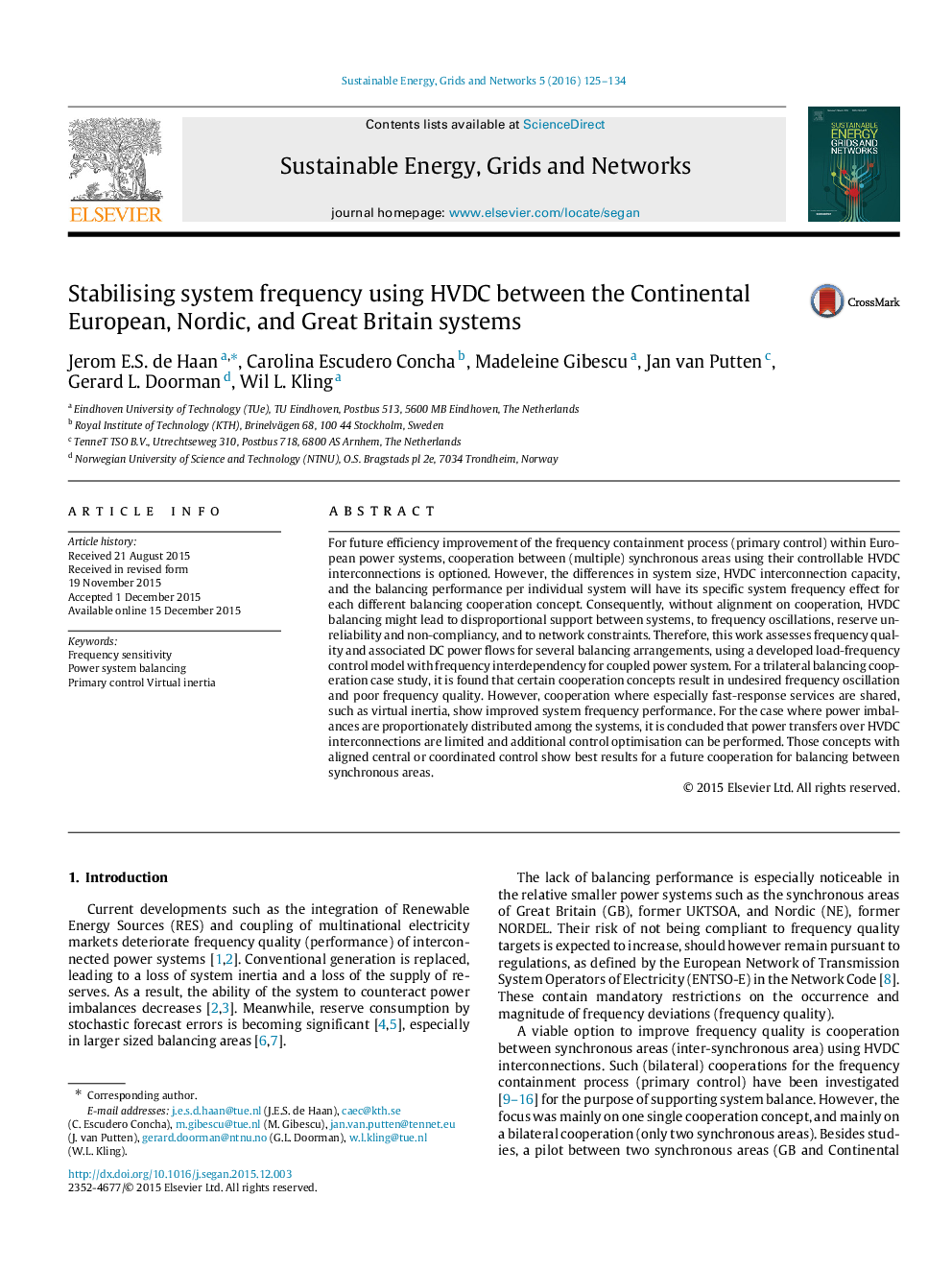| Article ID | Journal | Published Year | Pages | File Type |
|---|---|---|---|---|
| 524761 | Sustainable Energy, Grids and Networks | 2016 | 10 Pages |
For future efficiency improvement of the frequency containment process (primary control) within European power systems, cooperation between (multiple) synchronous areas using their controllable HVDC interconnections is optioned. However, the differences in system size, HVDC interconnection capacity, and the balancing performance per individual system will have its specific system frequency effect for each different balancing cooperation concept. Consequently, without alignment on cooperation, HVDC balancing might lead to disproportional support between systems, to frequency oscillations, reserve unreliability and non-compliancy, and to network constraints. Therefore, this work assesses frequency quality and associated DC power flows for several balancing arrangements, using a developed load-frequency control model with frequency interdependency for coupled power system. For a trilateral balancing cooperation case study, it is found that certain cooperation concepts result in undesired frequency oscillation and poor frequency quality. However, cooperation where especially fast-response services are shared, such as virtual inertia, show improved system frequency performance. For the case where power imbalances are proportionately distributed among the systems, it is concluded that power transfers over HVDC interconnections are limited and additional control optimisation can be performed. Those concepts with aligned central or coordinated control show best results for a future cooperation for balancing between synchronous areas.
